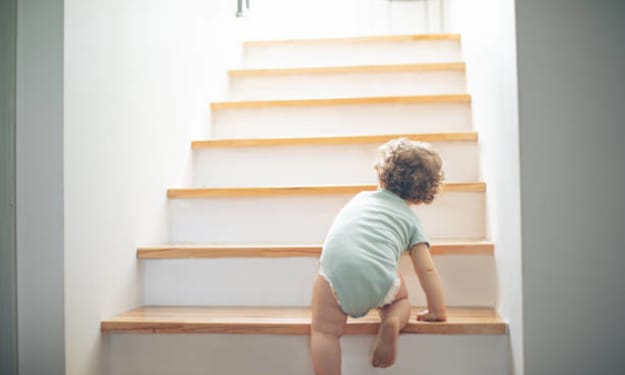
Since becoming an adult, it’s been impossible to avoid hearing about the importance of a strong pelvic floor. I’ve probably stumbled upon dozens of articles. My doctor and midwives recommend Kegels. Some friends warn that I better do them during pregnancy; other friends admit they skip the burpees in workout class so they don’t wet their leggings. I’ve read about the (debunked) strengthening claims of jade eggs and how French women get electronic physiotherapy after giving birth. The message is clear: a healthy pelvic floor deserves a place on my list of things to worry about.
There’s no question that this system of muscles, ligaments, nerves and connective tissues is crucial. It supports the bladder, uterus, vagina and rectum and helps them work well. Millions of women worldwide have pelvic floor problems like incontinence and prolapse (when the pelvic organs drop down and create a bulge in or out of the vagina). Men have a pelvic floor, too, but problems are less common and the male version doesn’t undergo the stress of childbirth.
But despite its importance, it turns out experts don’t entirely understand how the pelvic floor works.
You might also like these other stories in the Health Gap:
• The enduring mystery of migraines
• Should we rename women's body parts?
• The health risks of maturing early
“We haven’t dug deeply into the anatomy of this,” says Janis Miller, an obstetrics and gynecology professor and pelvic floor researcher at the University of Michigan. “It’s one of the last frontiers of anatomy, comparable to the brain.”

In fact, it’s still a “mysterious part of the body” that the public and much of the clinical community doesn’t understand, she says. But why the mystery? That’s likely a combination of the complexity of the pelvic floor system… and the simplicity of sexism.
It's one of the last frontiers of anatomy, comparable to the brain – Janis Miller
The pelvic floor is a highly integrated structure requiring organs, muscles and nerves to work together, says Emily Lukacz, a urogynecologist specialising in female pelvic floor disorders at University of California San Diego. “There are a lot of other complex systems, like the heart and the gut, but those aren’t voluntarily controlled,” says Lukacz. “That’s what makes it unique.”
The system is hidden under the pelvic bones, making it physically inaccessible. And the anatomy is intertwined, with nerves and connective tissue that aren’t discrete, according to Victoria Handa, a gynecology and obstetrics professor at Johns Hopkins University who focuses on pelvic health and reconstructive surgery. What’s more, although pelvic floor problems can significantly affect a woman’s quality of life, they aren’t life-threatening – so they get less public attention than other health concerns.

But those barriers all might be secondary to one main issue: “Unfortunately, for many centuries we only cared about male anatomy,” Handa says. “Female anatomy was kind of a variant of male anatomy.”
“This goes along with the whole history of underfunded investigation of problems that primarily impact women,” Lukacz says.
This goes along with the whole history of underfunded investigation of problems that primarily impact women – Emily Lukacz
Research also has been hindered by a sense of embarrassment and propriety about an intimate female area. “It’s a part of women’s bodies that has not been easily discussed in public arenas, so the ability to go to Congress and ask for money for studying this is just a little bit harder,” Miller says. This also means there isn’t a public spokesperson bringing awareness to pelvic floor issues.

Still, more research has been done in recent years, including work by Miller and her colleagues at the University of Michigan using MRI to detect injuries caused by childbirth. The imaging makes it possible to see the levator ani, a muscle that is sometimes torn during delivery, creating an injury that can cause pelvic organ prolapse and a weak pelvic floor. Estimates of how often this happens vary; one review found injuries to the muscle occur in 13-36% of vaginal births. (Miller conservatively estimates that 5-15% of vaginal births result in a tear.) Women with a torn levator ani muscle usually never know about it, Miller says.
What is often observed as pelvic floor weakness is actually torn muscle – Miller
Diagnosing birth injuries is key to individualising treatment for pelvic floor issues that previously has been largely one-size-fits-all, Miller says. Those often-touted Kegel exercises wouldn’t work for women with a torn muscle, for example.
“In the extreme, we’re asking for some women to strengthen a muscle they might not even have anymore,” she says. “What is often observed as weakness is actually torn muscle.”
Another research priority is figuring out the most effective ways to prevent pelvic floor problems before they start, and to determine exactly which women are at the highest risk. Some experts recommend pelvic floor exercises for prevention of incontinence and prolapse, but others don’t think there’s enough evidence. For now, the best proven risk factors for pelvic floor issues are ageing, vaginal childbirth and obesity

“It’s very hard to know what to tell women to do because we’re going to worry and bother a lot of healthy people without the scientific evidence there,” says Johns Hopkins’ Handa. “Most women don’t get pelvic floor disorders. They can be very burdensome but they can also be fairly minor. And they’re not dangerous. I’m hesitant to tell women that there’s a strong message about a prevention burden they’re supposed to bear right now.”
The good news is that as scientists continue to try to understand everything about the anatomy and function of the pelvic floor, there are treatments for women with problems. And pelvic floor issues are common. Almost a quarter of women in the United States have a pelvic floor disorder – urinary incontinence, pelvic organ prolapse or fecal incontinence – according to a study using results from a national US survey. In another study, 42% of the UK women surveyed had urinary incontinence.
While pelvic floor issues do become more prevalent with age, young women have them too
While pelvic floor issues do become more prevalent with age, young women have them too. Research has documented widespread incontinence among professional and college female athletes, for example. A review found that more than a third of athletes studied experienced urine leakage – sometimes caused when intense exercise puts pressure on the belly.

Stress urinary incontinence – urinating when you sneeze, cough, jump or lift something heavy – is often treated with pelvic muscle exercises, lifestyle changes like avoiding too many fluids, physical therapy and biofeedback, which uses electronic sensors to help you work the right muscles. A device called a pessary can be inserted into the vagina to support the bladder. A surgical procedure called a midurethral sling is another option.
Pelvic organ prolapse can be treated with pelvic floor exercises and therapy, pessaries, or, if symptoms are disrupting your life, surgeries to support the organs and move them back into place.
Looking forward, pelvic floor research is ripe for new discoveries. “If you look at things like heart disease or diabetes, they’ve been studying those conditions for 50, 100 years,” Lukacz says. “It’s rare that there’s a big breakthrough. We’re at the really nascent stage of this field. With the amount of information that we’re garnering from the current research that’s going on, we have massive changes probably every five to 10 years.”
Michigan’s Miller hopes that along with scientific gains will come personal understanding – not more stress – for girls and young women. She suggests teaching girls to squeeze their pelvic floor muscles when they cough or sneeze and after using the bathroom. If they learn how to use those muscles early, they’ll know later in life if something is wrong or if they’re working just fine, she says.
“If girls and adolescents could just... be brought aware of this muscle, instead of this being a secret, hidden thing, and start using it, then we wouldn’t need to set aside time every day to do Kegel exercises,” Miller says.
Hopefully, that means one less item on women’s list of things to worry about.






Comments
There are no comments for this story
Be the first to respond and start the conversation.